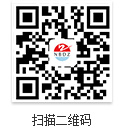China is the world's largest textile producer, consumer and exporter. Since 1994, it has been the world's number one textile and apparel exporter for 24 consecutive years. The textile industry is a traditional high-pollution industry. In recent years, driven by the guidance of national policies and the internal driving of enterprises, China's textile and garment industry has strived to build a green supply chain and increase the research and application of new dyes and chemicals to reduce the dependence and emission of harmful substances.
In May 2016, China National Textile and Apparel Council announced the “Action Outline for Supply Chain Chemical Management Innovation 2020”, aiming at the coordination and unification of the requirements, systems and capacity building of chemical environmental risk management and control in the textile and garment industry. Guide to action. At the same time, multiple chemical emission standards such as Zero Chemical Emissions (ZDHC) are gaining more and more support throughout the industry chain. ZDHC owns several contracting brands such as Nike, Adidas, Hummer, H&M, Gap and Li Ning. Fortunately, many Chinese companies are joining ZDHC to promote the development of green and environmental protection in the textile and apparel industry through technology, materials and supply chain cooperation to implement the “Zero Emission Scheme for Hazardous Chemicals”. In fact, the ZDHC Foundation has also signed a strategic cooperation agreement with China Textile Association to support the development and implementation of the “Supply Framework for Supply Chain Chemical Management Innovation 2020”. ZDHC is a comprehensive global platform supported by many of the world's leading brands, suppliers, solution providers and industry associations, researchers, government agencies and NGOs. Since its launch in 2011, it has developed a number of trusted reference guides and utilities and support for the industry.
Professionals have recently pointed out that while the cessation of hazardous chemicals is increasingly becoming the consensus of the entire industry chain, the implementation of standards and methods is becoming a major challenge to achieve zero emissions. Patrice Carreau, chairman of the Huntsman Textile Dyeing Global Sustainability Committee, said: "Each chemical emission standard and specific brand of restricted substances list have their own licensing restrictions, testing mechanisms and screening methods, although similar to each other However, it is not completely consistent, and there are many repetitions. In addition, the above standards must also comply with national regulations, and the laws and regulations vary greatly among countries.” Huntsman Textile Dyeing Division is the world leader in textile and related industries. A supplier of high quality dyes and chemicals.
Carreau further explained that the textile and apparel industry is not only a multitude of operations, but also a complex business network. Take the clothing brand as an example, its suppliers may come from many countries and regions, and individual suppliers must comply with different regulatory systems. On the other hand, textile mill customers may also come from all directions, but also have their own List of restricted substances. As a result, “factory and brand operations will be more complex, costs will increase, and progress toward a cleaner industry supply chain will slow down.”
Carreau called on the textile and apparel industry to work with all partners in the supply chain to follow the same set of standards to “set exact limits based on industry best practices and the latest chemical manufacturing technologies”. In Carreau's view, a unified standard system not only avoids complexity and confusion, but also helps factories save time and money, meet the needs of brand customers, and support dye and chemical companies to innovate.
“Unification standards are imperative. Once standards are unified, brands and their partners can turn resources into other areas to meet changing consumer preferences.” Carreau said the textile and apparel industry is already in bluesign® Blue Label Certification and ZDHC have the right standards and the necessary infrastructure.
The Swiss-based bluesign is a global leader in assessing the use of chemicals in the textile industry. The bluesign® system defines a range of standards for the use of chemicals, including the responsible use of resources, efficient management of hazardous materials and the elimination of all hazardous substances, and covers suppliers of raw materials such as yarns, dyes and additives to textile manufacturers. Retailers to brand companies and end consumers. The bluesign® blue label certification focuses on the overall situation, planning the industry's most comprehensive list of permits, and providing tools to support best practices for protecting consumers, workers and the environment. Nike, Adidas and other well-known brands have already entered into strategic cooperation with bluesign. Promote sustainable solutions in its global supply chain. Many Chinese companies, including Annoqi, Wanfeng Chemical and Beijiang Textile, have also become bluesign partners or launched bluesign® certified products.
According to Carreau, following the ZDHC's set goals and paths and obtaining the stringent certification of the bluesign® blue label, it provides a standardized infrastructure for the entire industry. “As one of the founding members of the bluesign® blue label certification and a veteran active member of ZDHC, Huntsman Textiles has been committed to driving a cleaner, greener and more resource-efficient textile value chain. Preparation, to help the industry to start the pace of transformation, unified list of restricted substances and related standards."
Huntsman Textile Dyeing Division is a leading global supplier of high quality dyes and chemicals for the textile and related industries. Through operations in more than 90 countries and seven major production facilities in six countries (China, Germany, India, Indonesia, Mexico and Thailand), Huntsman Textiles & Dyeing Division is doing everything it can to provide local customers. Rapid and professional technical service. Sustainability, innovation and cooperation are the top priorities of Huntsman Textiles. Huntsman Textile Dyeing focuses on research and development of superior solutions to create innovative and innovative products and technologies such as comfort, dryness, sun protection or advanced dyeing to reduce water and energy consumption and satisfy customers. Demand, creating a sustainable environment.


 Mr. Chen Fei (Mr.)
Mr. Chen Fei (Mr.) 86-574-63550733
86-574-63550733 86-574-63551022
86-574-63551022 dz@dzfibre.cn
dz@dzfibre.cn



